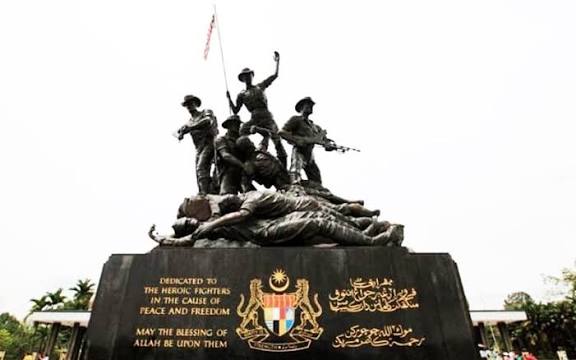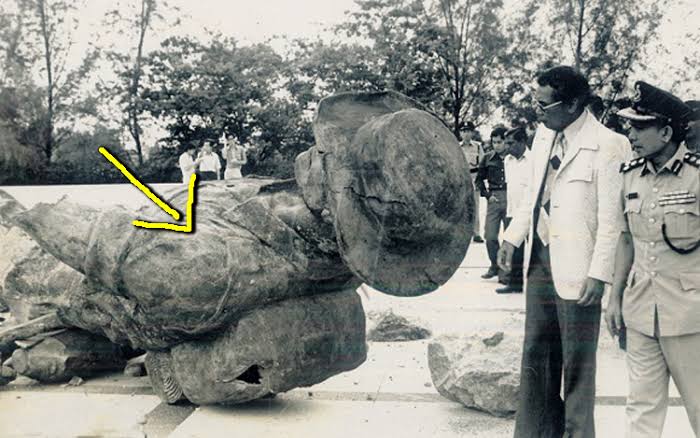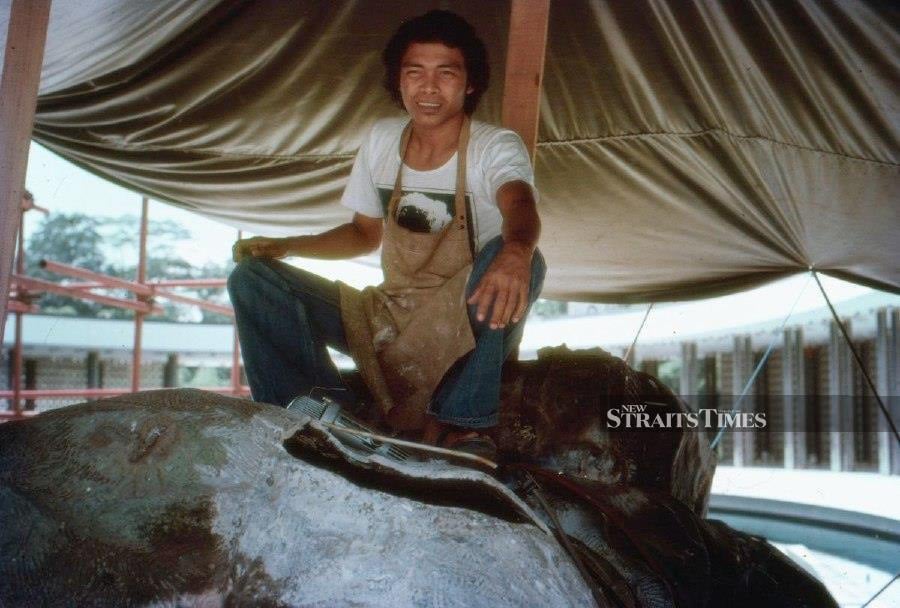Located in Taman Tasik Perdana, Kuala Lumpur, the National Monument is a well-known statue among Malaysians, serving as a memorial to commemorate those who lost their lives fighting for the country's freedom.
The construction of the National Monument was initiated by Malaysia’s first Prime Minister, Tunku Abdul Rahman Putra Al-Haj, in the 1960s.
 Image Credit: FMT
Image Credit: FMT
The bronze monument, which stands at 15 metres tall, is said to have been inspired by the Iwo Jima Memorial (also known as the U.S. Marine Corps War Memorial) in Virginia.
Fun fact: The creator of the National Monument was the same individual who built the Iwo Jima Memorial, Felix de Weldon, a renowned Austrian-born sculptor. It is also said that the face of the statue holding up the Jalur Gemilang was modeled after a young Tunku Abdul Rahman.
It is understood that the monument cost RM2.5 million to build. Interestingly, nearly half of the cost was donated by members of the public.
However, many might not know that the proud memorial we see today is not the original monument erected in 1966.
The bombing of Tugu Negara, 1975
It all happened in the early morning of August 26, 1975. A massive explosion was heard in the area where the National Monument stands.
Later, police encountered four individuals believed to be Communist operatives who had planted three bombs at the monument site.
A shootout ensued between law enforcement and the four insurgents. However, all of them managed to flee, and to this day, none have been officially arrested. It is believed they escaped to a neighbouring country.
 Image Credit: Iluminasi
Image Credit: Iluminasi
One of the bombs detonated, destroying the memorial. One of the bronze figures collapsed, and three others lost their heads.
Thankfully, the remaining two bombs failed to explode and were successfully defused by a team of professionals.
The restoration process
Two weeks after the attack, the Prime Minister at the time, Tun Abdul Razak Hussein, launched a public campaign to raise funds for the monument’s restoration, and the public did not disappoint. Eventually, the campaign reached its RM1 million goal, and the restoration process began.
 Image Credit: NST
Image Credit: NST
An Australian art lecturer at Institut Teknologi MARA (now UiTM), Christopher Carney, was awarded the job by the government. He then recruited three of his best students: Zolkeply Maulana, Mufti Jantan, and Abdul Mansoor Ibrahim.
Interestingly, all three students had just graduated from UiTM’s School of Fine Art when they were handpicked for the project.
Zolkeply said the project was undeniably the most memorable experience of his life, especially the moment he climbed the highest figure to weld the hat on, which he described as the peak of his journey.
“We took the opportunity to imprint our names on the statue's hat. If anyone uses a drone to film the National Monument, I'm pretty sure they can capture our names,” he said.
Zolkeply also shared that his motivation for joining the project was to honour his father, a policeman with the General Operations Force who fought in the ongoing communist insurgency.
“To my joy, my father made a surprise visit to the site to see our handiwork and told his fellow policemen that he was very proud of me,” he said.
Challenges
Like many things in life, restoring such an important monument did not come easy.
 Image Credit: NST
Image Credit: NST
Another member, Mufti, said that neither he nor the other two graduates had ever worked with bronze sculptures before.
On top of that, the group carried out the project without proper equipment, protective gear, or safety measures.
“We worked long hours, often in the burning hot sun, but we loved it because we wanted to show Malaysians that we were capable of doing a good job.”
The restoration of the National Monument was completed a year and a week later, in April 1977. It was officially reopened to the public on May 11 of the same year.
Featured Image Credit: Iluminasi, FMT, Facebook







